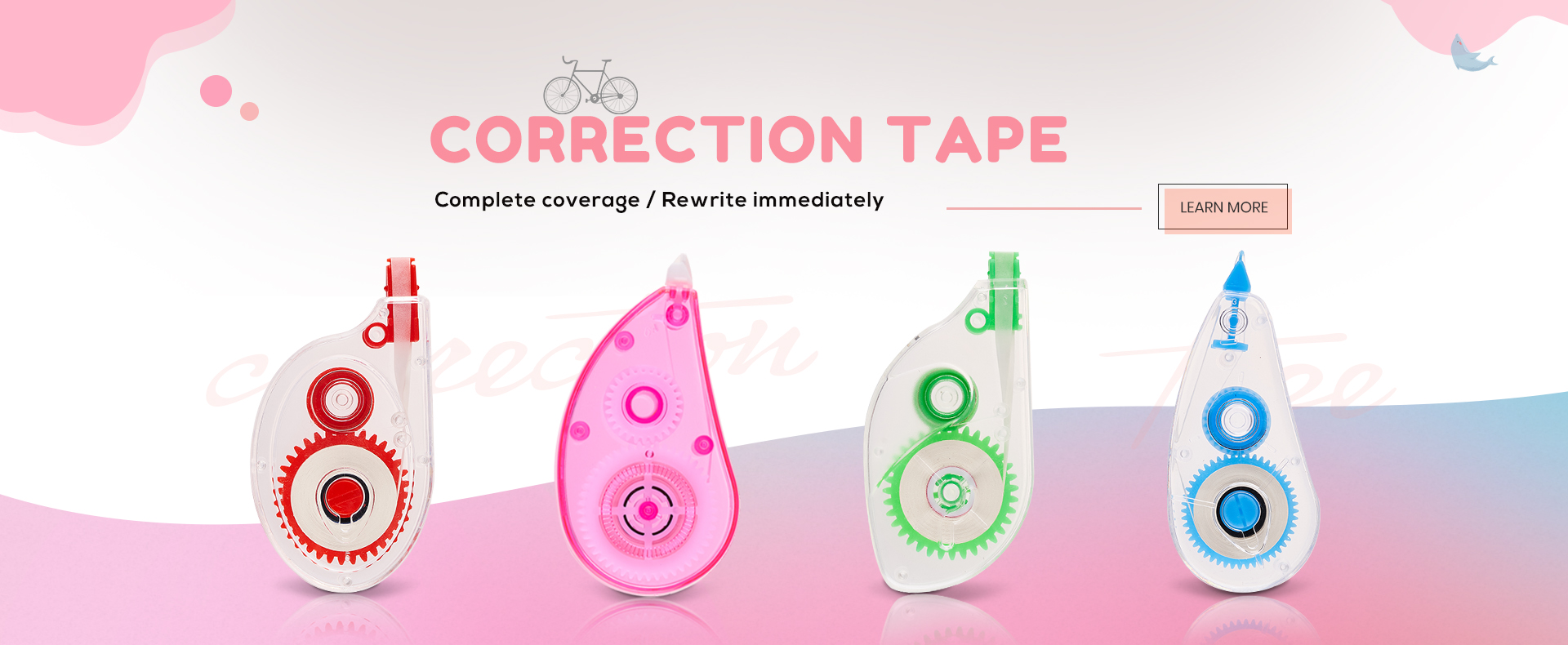Correction tape (also called “white-out tape”) is a fast, clean way to fix handwritten and printed mistakes. Unlike liquid correction fluid, tape needs no drying time, lets you write immediately, and avoids strong solvent odors—key advantages for classrooms and offices.
What correction tape is—and how it covers ink cleanly
A correction tape is a thin, opaque strip carried on a plastic film. When you press its applicator tip to the page, a white masking layer transfers to the paper, covering text instantly. Because the product is solid (not a volatile liquid), it isn’t subject to the inhalant-misuse risks that historically accompanied some correction fluids.
Choose the right tape for the job
Width & length. For notebooks and business forms, 4–6 mm widths are common; narrower tape is ideal for small fonts and grid paper. Retail dispensers typically offer 6–10 m per cartridge, with refill cassettes available for heavy users.
Film & mechanism. Many modern tapes use a durable polyester film that resists tearing compared with older paper-based carriers. Dispensers employ either gear or belt mechanisms; both can feed smoothly when properly tensioned. Some models incorporate re-tensioning or clutch systems to keep the supply and take-up reels moving evenly as diameters change.
Refillable & eco options. If you’re minimizing waste or buying for schools, consider refillable bodies and cartridges that use recycled plastic content; several major brands offer “green” lines with high recycled plastic percentages.
Step-by-step: Perfect application every time
-
Prep the surface. Place your notebook or document on a firm, flat surface. Dust or oil on the page can reduce adhesion.
-
Set the angle. Hold the applicator at roughly a 45° angle with the logo side up and the nose flat against the page. Start just before the first character you want to cover.
-
Apply steady pressure. Pull the dispenser across the line in a smooth motion. Avoid lifting the tip until you pass the final character.
-
Finish cleanly. At the end of the stroke, flick your wrist slightly upward to “break” the tape cleanly. If you see a small tail, tap it down with a fingertip.
-
Write immediately. Ballpoint, gel, and rollerball inks will typically write cleanly on the applied strip with no waiting time.
Troubleshooting: Skips, wrinkles, or peeling
Problem: The tape won’t stick or skips.
Likely causes include too steep/flat an angle, glossy paper, or dust. Re-apply at ~45°, increase pressure slightly, and ensure the page is clean. If the ribbon looks slack inside the case, a quick re-tension (on models designed for it) can restore feed.
Problem: Wrinkles or bunching.
This can happen if you twist the dispenser mid-stroke. Keep your wrist straight, slow down, and let the mechanism feed—don’t tug the tape. Reels with clutch or re-tensioning designs specifically aim to prevent looping as spool diameters change.
Problem: Rough edges.
Check the applicator tip for paper dust; wipe it gently. Very fibrous paper may need a slower pass or a second light layer.When not to use correction tape
On legal documents, checks, passport forms, and other tamper-sensitive paperwork, any visible correction (including tape) may be rejected. In those cases, reprint or rewrite the document instead of masking errors.
Safety, compliance, and storage basics
Modern correction tapes are generally considered low-hazard office supplies. Safety Data Sheets (SDS) for common products often indicate no substances on the EU REACH Candidate List and no Annex XVII restrictions. Store at room temperature out of direct sunlight, and keep away from small children due to small parts.
Pro buying tips for schools and offices
-
Match widths to forms: 5 mm covers most printed body text neatly; keep a 4 mm on hand for fine grids.
-
Choose refillable bodies for high-volume users to cut cost and plastic waste.
-
Prefer durable films if students will overwrite heavily with gel pens.
Why tape still beats fluid in many settings
The ability to write instantly, avoid solvent smell, and keep desks mess-free explains why tape has eclipsed fluid for everyday handwriting corrections—even as digital tools proliferate. For learners and busy offices, those seconds saved per fix add up over a semester or a fiscal quarter.
-
Post time: Sep-11-2025